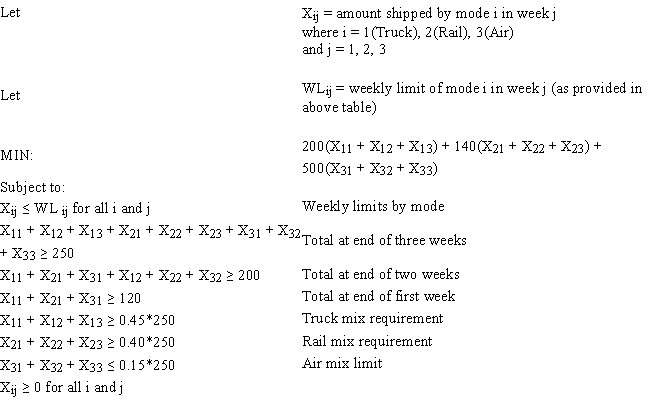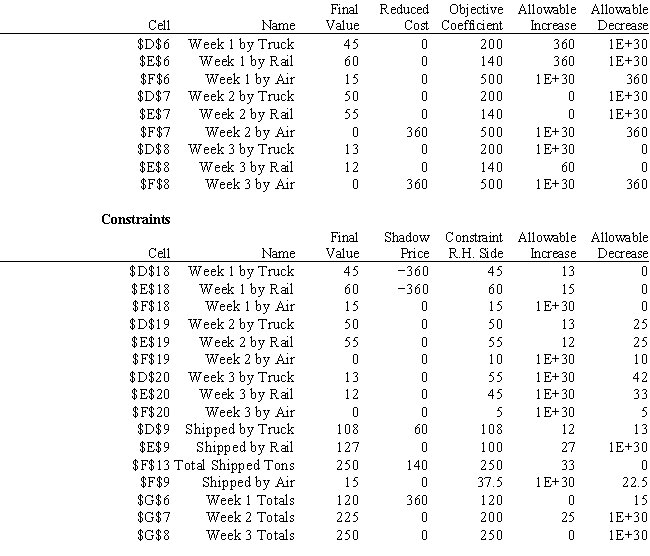Exhibit 4.1
The following questions are based on the problem below and accompanying Analytic Solver Platform sensitivity report.
Carlton construction is supplying building materials for a new mall construction project in Kansas. Their contract calls for a total of 250,000 tons of material to be delivered over a three-week period. Carlton's supply depot has access to three modes of transportation: a trucking fleet, railway delivery, and air cargo transport. Their contract calls for 120,000 tons delivered by the end of week one, 80% of the total delivered by the end of week two, and the entire amount delivered by the end of week three. Contracts in place with the transportation companies call for at least 45% of the total delivered be delivered by trucking, at least 40% of the total delivered be delivered by railway, and up to 15% of the total delivered be delivered by air cargo. Unfortunately, competing demands limit the availability of each mode of transportation each of the three weeks to the following levels (all in thousands of tons):  The following is the LP model for this logistics problem.
The following is the LP model for this logistics problem. 

-Refer to Exhibit 4.1. Should the company negotiate for additional air delivery capacity?
Definitions:
Histogram
A graphical representation that uses bars to show the frequency distribution of a dataset.
Coefficient Of Determination
A statistical measure, often denoted as R², that represents the proportion of the variance for a dependent variable that's explained by an independent variable or variables in a regression model.
Independent Variables
Elements in research or a scenario that are altered or sorted to explore their influence on response variables.
Regression Equation
An equation that expresses the linear relationship between one or more independent variables and a dependent variable.
Q1: Refer to Exhibit 4.2. Constraint cell F9
Q2: There are a variety of problems a
Q12: The main difference between LP and NLP
Q18: Refer to Exhibit 11.11. What formula should
Q34: Refer to Exhibit 9.7. What is the
Q36: Refer to Exhibit 3.3. What formula should
Q38: If a company produces Product 1,
Q60: Hormel Foods had to recall 104,000 pounds
Q73: The sales manager is in charge of
Q74: Which of the following describes a multiplicative